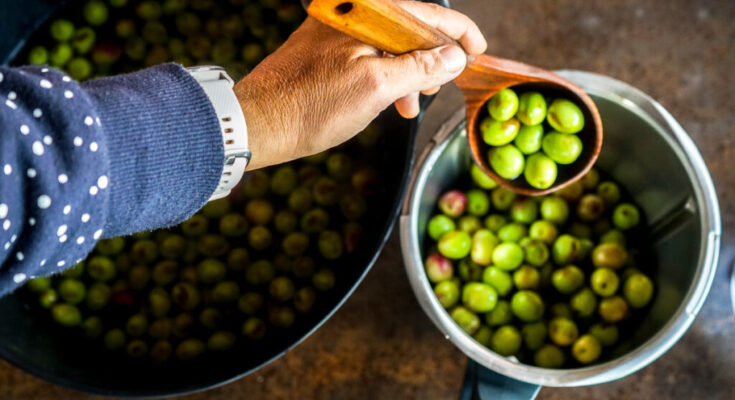Olive oil is one of the healthiest and most versatile oils you can use in cooking, skincare, and even hair care. Whether you’re drizzling it over a salad, adding it to a stir-fry, or using it for a DIY beauty treatment, there’s no denying the numerous benefits of this liquid gold. But did you know that you can make olive oil at home? While large-scale production requires specialized equipment, the process of making olive oil on a smaller, home-based scale is simpler than most people think. In this article, we’ll walk you through the easiest way to make olive oil at home.
What You’ll Need:
Before you start, it’s essential to gather everything you’ll need for the process. Luckily, making olive oil at home doesn’t require a lot of fancy equipment. Here’s a basic list:
- Fresh Olive Fruits (Olives): The key ingredient! The quality of the olive oil depends largely on the quality of the olives you use. Choose ripe, healthy olives from a local farm or your own olive tree, if you have one. The more ripe the olives, the more flavorful the oil will be.
- A Mortar and Pestle or Blender: These will be used for crushing the olives. A mortar and pestle is ideal for small batches, but a blender can speed up the process if you’re making a larger quantity.
- Cheesecloth or Fine Mesh Sieve: For straining the oil.
- A Container for Oil: A glass bottle or jar works best for storing the final product.
Step 1: Harvesting or Selecting Your Olives
If you have an olive tree, you’ll want to harvest the olives when they are fully ripe. Ripe olives are typically a darker shade of green or purple, but the exact color will depend on the variety of olives you’re working with. If you’re purchasing olives, aim to find fresh, plump fruits—avoid overly wrinkled or dried-out olives as they’ll produce a less flavorful oil.
Step 2: Cleaning and Preparing the Olives
After harvesting or purchasing your olives, rinse them thoroughly under cold water to remove dirt, debris, and any chemicals that might be on the surface. This ensures that your olive oil is clean and pure.
Step 3: Crushing the Olives
The next step is to crush the olives into a paste. If you’re making olive oil on a small scale, using a mortar and pestle is a great option. Here’s how to do it:
- Place a handful of olives in the mortar.
- Begin grinding with the pestle, applying steady pressure until the olives turn into a thick paste.
If you’re making a larger batch, you might want to use a blender. Simply place the olives in the blender and pulse until you achieve a smooth, chunky paste.
Step 4: Extracting the Olive Oil
The traditional method of extracting olive oil involves pressing the paste to separate the oil from the solid parts. While you likely won’t have access to a press, you can still do this by using a cheesecloth or a fine mesh sieve.
- Lay out a large piece of cheesecloth or place a fine mesh sieve over a bowl.
- Scoop the olive paste into the cloth or sieve.
- Use your hands or a spoon to press the paste down and extract the liquid. You may need to apply a fair amount of pressure, but don’t worry—the oil will gradually start to separate from the solids.
- Let the oil drip into the bowl, and once you’ve pressed as much as you can, carefully collect the remaining oil.
Step 5: Filtering the Oil (Optional)
At this point, you may notice small bits of olive pulp floating in the oil. To remove these, you can strain the oil through a finer sieve or a second layer of cheesecloth. This step is optional, but it helps in ensuring a smoother, cleaner final product.
Step 6: Storing Your Olive Oil
Now that you’ve extracted the oil, it’s time to store it. Olive oil should be kept in a cool, dark place, as light and heat can degrade the oil’s flavor and quality. Pour the oil into a clean glass bottle or jar and seal it tightly.
Tips for the Best Homemade Olive Oil:
- Olive Variety Matters: Different olive varieties produce different flavors of oil. Experiment with different types of olives to find the one that suits your tastes best.
- Freshness is Key: The fresher the olives, the better the flavor. If possible, use olives as soon as they’re ripe for the best results.
- Don’t Over-Press: When extracting the oil, avoid over-pressing, as this can release bitter compounds into the oil. The goal is to extract the highest-quality oil possible.
- Use Cold Extraction Methods: While you may not have access to an industrial cold press, ensure that the process is done in a cool environment. Heat can destroy the oil’s beneficial properties.
Conclusion
Making olive oil at home is a surprisingly straightforward and rewarding process. Although you won’t be able to produce large quantities or match the efficiency of commercial production, the oil you make will be a fresh, flavorful, and highly rewarding product. Plus, you’ll have the satisfaction of knowing exactly where your oil comes from and that it’s 100% natural.
With this simple guide, you can begin your journey into making your own olive oil and enjoy the rich taste and health benefits it brings. Whether you’re using it in cooking, skincare, or as a gift, homemade olive oil is a great addition to any kitchen



